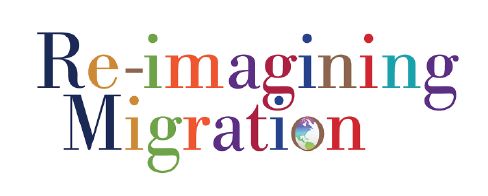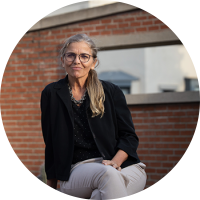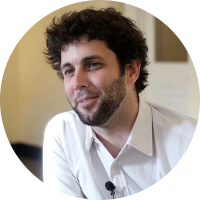- Who We Are
- Topics
- By Subject Area
- dummy
- By Level
- Projects
- Projects Column 1
- Agency by Design
- Aligned Programs for the 21st Century
- Artful Thinking
- Arts as Civic Commons
- Causal Learning Projects
- Center for Digital Thriving
- Citizen-Learners: A 21st Century Curriculum and Professional Development Framework
- Creando Comunidades de Indagación (Creating Communities of Inquiry)
- Creating Communities of Innovation
- Cultivating Creative & Civic Capacities
- Cultures of Thinking
- EcoLEARN Projects
- Educating with Digital Dilemmas
- Envisioning Innovation in Education
- Global Children
- Growing Up to Shape Our Place in the World
- Projects Column 2
- Higher Education in the 21st Century
- HipHopEX
- Humanities and the Liberal Arts Assessment (HULA)
- Idea Into Action
- Implementation of The Good Project Lesson Plans
- Inspiring Agents of Change
- Interdisciplinary & Global Studies
- Investigating Impacts of Educational Experiences
- JusticexDesign
- Leadership Education and Playful Pedagogy (LEaPP)
- Leading Learning that Matters
- Learning Innovations Laboratory
- Learning Outside-In
- Making Ethics Central to the College Experience
- Making Learning Visible
- Multiple Intelligences
- Navigating Workplace Changes
- Next Level Lab
- Projects Column 3
- Out of Eden Learn
- Pedagogy of Play
- Reimagining Digital Well-being
- Re-imagining Migration
- ROUNDS
- Signature Pedagogies in Global Education
- Talking With Artists Who Teach
- Teaching for Understanding
- The Good Project
- The Studio Thinking Project
- The World in DC
- Transformative Repair
- Visible Thinking
- Witness Tree: Ambassador for Life in a Changing Environment
- View All Projects
- Projects Column 1
- Resources
- Professional Development


Re-imagining Migration
Seeks to ensure that young people grow up understanding migration as a shared condition of our past, present, and future in order to develop the knowledge, empathy and mindsets that sustain inclusive and welcoming communities.
Why a focus on Migration?
Every day, children in our classrooms navigate multiple contexts—school, home, and neighborhood– each contributing to their understanding of who they are, where they come from, and the roles they might play as members of multiple communities. Immigrant-origin children straddle cultures, languages, dialects, and value systems at home, at school, and in cultural and religious institutions, making their lives particularly rich and complex.
The children of immigrants are one of the fastest-growing sectors of the post-industrial regions of the world, accounting for 27% of children and 33% of all young adults in the US alone. These children, 85% of whom are people of color, are not receiving the education that all children are entitled to live fulfilling lives. At school and in society they meet rising xenophobia, bias, and bullying with longlasting impact on their growth.
Most importantly, they meet educators who wish they had better preparation to teach in such culturally, linguistically, economically, and religiously diverse contexts, able to nurture young people to live and thrive in a world of growing diversity, complexity and mobility.
Our Research
Responding to this need, the Re-Imagining Migration project at Project Zero is a pedagogical research initiative dedicated to advancing educational frameworks, pedagogies, and tools that practitioners can use to prepare all youth for a world on the move. Our research informs the work of educators in schools, cultural institutions, refugee centers and teacher education context. In this work we collaborate closely with the Harvard Immigration Initiative at HGSE led by Carola Suarez-Orozco and Re-Imagining Migration (a 501(c)(3) non profit) led by Adam Strom [RIM.org].

Lines of inquiry currently underway:
- Re-Imagining Migration Educational Framework development.
This framework cast migration as a shared human experience and as an educational opportunity to revisit foundational questions in education

For more information see: ‘the kind of learning we need’, “five dispositions and thinking routines for World on the Move”, “migration learning arc”.
-
Re-Imagining Migration @ Smithsonian is an interactive digital collections space for educators, families, communities, and youth. It is designed to explore migration as our shared human experience and prepare all learners to live in a world on the move. Visitors can discover, create, and share digital collections using Smithsonian resources and our Re-imaging Migration Frameworks and tools. This project is led by Veronica Boix Mansilla in collaboration with the Smithsonian Institution Education’s Office of Digital Technologies, and 20 participating museums. The site will be launched in the Fall of 2022.
For more information see examples of collections on Museum Mindsets “What’s Your Name”
-
Socio Emotional Thinking Routines for a World on the Move
We worked with 10 Teacher Education faculty across the US, in Spain and Argentina to advance and test a new set of thinking routines to deepen SEL understanding while attending to the unique challenges of diversity, othering, and inequity. The routines seek to broaden understanding of emotional experiences, take perspective empathically and diminish hatred and discrimination.
For a practical guide see, “Social & Emotional Thinking Routines for Teaching in a Diverse, Complex, and Moving World”
-
Pedagogies of Voice: Re-imagining the role of languages in education for a world on the move
This project co-led by Veronica Boix Mansilla and Paola Uccelli seeks to advance an interdisciplinary pedagogical framework to leverage all students’ linguistic and cultural resources to maximize their learning potential and contribute to more equitable and inclusive communities. This project seeks to serve district leaders, researchers, teachers, families, communities to come to see language as a gateway to understand self and others rather than as the persistent gatekeeping role it takes today.
For an examples of family engagement please see: “Family Stories Collection”, “Cultivating Learning: Connecting through Family Stories”

For more information about this project, events, resources and findings, please visit our RIM.org website at https://reimaginingmigration.org/ and follow us on twitter @reimaginemigrat.
In the News:
https://reimaginingmigration.org/our-work-in-the-news/
Latest Resources

Project Info
Funder:
Smithsonian Institute, Radcliffe Center for Advanced Study at Harvard University, NoVo Foundation, Regents of the University of California - Los Angeles





-
-
-
Support PZ's Reach